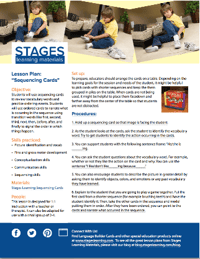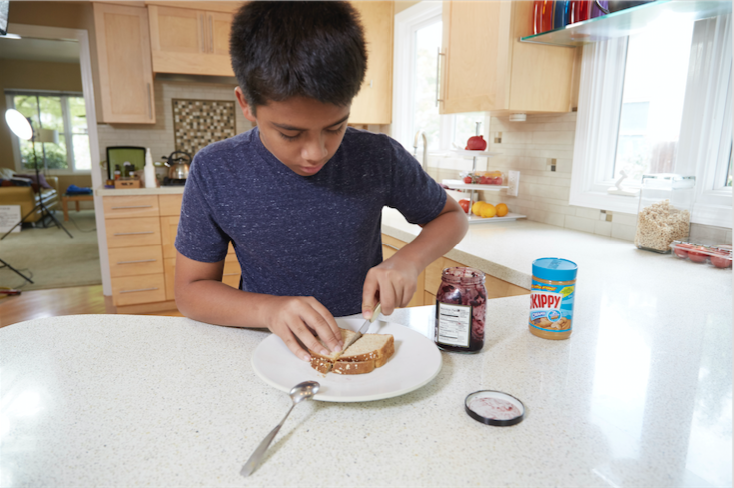Sequencing Cards Lesson Plan

Download the Sequencing Cards Lesson Plan
Lesson Overview
Students will use sequencing cards to review vocabulary words and practice ordering events.
Skills Practiced
- Picture identification and vocabulary
- Fine and gross motor development
- Conceptualization skills
- Communication skills
- Sequencing skills
Materials
People
This lesson is designed for 1:1 instruction with a teacher or therapist. It can also be adapted for use with a small group of 2-4 students.
Setup
To prepare, educators should arrange the cards on a table. Depending on the learning goals for the session and needs of the student, it might be helpful to pick cards with shorter sequences and keep the them grouped in piles on the table. When cards are not being used, it might be helpful to place them facedown and farther away from the center of the table so that students are not distracted.

Procedures
- Explain to the student that you are going to play a game together. Put the first card from a shorter sequence (for example brushing teeth) and have the student identify it. Then, take the other cards in the sequence and model putting them in order. After they have been ordered, you can point to the cards and narrate what occurred in the sequence.
- Take another set of cards and put the first card in the sequence on the table. You can either have students try and order the next cards in the sequence on their own or place the cards one by one on the table and have the student decide whether one card goes before or after the other. You can ask students “What happens before?” and “What happens next?”
- As students become more skilled in sequencing, you can increase the difficulty of the activity by mixing the order of sequences, using longer sequences, or shuffling different sequences together so that students would have to separate and reorder them.
- After a sequence has been ordered correctly, you can ask the student to narrate what is happening in each picture. Have the student try and tell you about the entire sequence independently using transition words like first, second, third, next, then, before, after, and finally to signal the order in which things happen.
- You can also have students act out some of the sequences, especially those that might be easier to try out in your particular setting. For example, students might be able to demonstrate the “washing hands” sequence.

Grace Chen
Grace Chen is currently pursuing an Ed.M. in Arts in Education at Harvard Graduate School of Education. She has been a teaching artist, curriculum developer, and research assistant focusing on innovative evaluations in out-of-school time programs. She hopes to develop resonant and empowering art programs by partnering with youth in educational research and practice.






